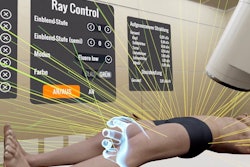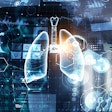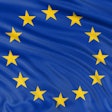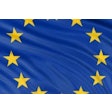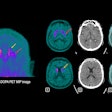Clinical audits in radiation protection are proving their worth in Switzerland, even though organizational and communication challenges have arisen due to the country's four official languages and different regional cultures.
"The peer-to-peer strategy seems to be of great benefit for all stakeholders involved in a clinical audit process," noted Manuel Bondini, project manager of Clinical Audits in Radiation Protection at the Ufficio Federale della Sanità Pubblica (UFSP). "The fact that the supervisory authority does not have access to the recommendations increased the acceptance of the departments concerned."
In Switzerland, the mean annual effective dose per capita from CT examinations increased from 0.28 mSv in 1998 to 1.24 mSv in 2021. This was mainly due to a significant increase in the number of CT exams performed, rising from 45 to 195 per 1000 inhabitants, respectively, Bondini and his colleagues reported at EuroSafe 2024.
The growth of PET/CT scans has contributed because they expose patients to radiation by both the dose that results from the administered radiopharmaceutical and from the CT scan itself. Although the use of PET scanners has reduced this radiation exposure, research shows this effect has been hindered by the radiation dose required for the CT scans conducted for PET attenuation correction.
Introduction of audits
The Federal Office of Public Health (FOPH), the radiation protection regulatory body in Switzerland, implemented a national clinical audit system. The main aims were to verify the justification and optimization of imaging procedures and to improve the quality of care in high-dose procedures in radiology, nuclear medicine, and radiotherapy.
 Facilities/departments audited across Switzerland. All figures courtesy of FOPH and ESR EPOS database.
Facilities/departments audited across Switzerland. All figures courtesy of FOPH and ESR EPOS database.
Between 2016 and 2019, the first group of auditors were trained, which enabled pilot clinical audits to be carried out. The main goal was to gain initial experience and to improve the process of clinical audits in high-dose procedures in radiology, nuclear medicine, radiotherapy, and interventional cardiology.
"The project suffered a setback because of the COVID-19 pandemic," Bondini pointed out. "In 2020, the first official peer-to-peer clinical audits were carried out. A selected team of auditors was assigned to a randomly chosen department. The auditing team visited the department and conducted interviews with the responsible staff members of the department with the help of a checklist developed by the dedicated expert commission."
In 2023, the FOPH launched a survey among the auditors and the audited departments to evaluate the quality of the performed audits and also the quality of the national clinical audit system itself. The survey was anonymous, and the only personal information requested was the profession of the respondent and the medical specialty of the department. The questions were focused on atmosphere, communication, peer-to-peer, and usefulness.
Since the start of the process, 178 departments in radiology, radiotherapy, nuclear medicine, and cardiology have been audited across Switzerland, the authors stated. "Due to the peer-to-peer process, the outcomes of the clinical audits, meaning the recommendations of the peers, were provided to the audited department only. The FOPH did not have access to the reports of the clinical audits containing the recommendations of the peers. This was done to improve the acceptance of the clinical audits by the audited departments."
However, the auditors had the option of informing the supervisory authorities in case of serious deviations from legal requirements.
The quality survey showed that for 75% of the audited departments, the clinical audit program was useful for reaching a better quality of care. For 9% of the departments, clinical audits were not the right tool for improvement. The remaining 16% indicated not having a particular advantage or disadvantage from the clinical audits.
The usefulness of the clinical audits was perceived slightly more by auditors than by departments, with a percentage of 78%. The negative responses dropped to 7%.
 General assessment by the auditors.
General assessment by the auditors.
The results indicated that in the medical specialties where the procedures are more structured and the professionals are better trained (e.g., in radiotherapy), the usefulness was slightly less recognized by the auditors and the audited facilities. In cardiology, where training in radiation protection is minimal compared to the other specialties, the usefulness of clinical audits had a strong recognition (> 85%), with a maximum recognition rate of 91% concerning radiation protection issues of the staff.
 Assessment of the usefulness by the departments.
Assessment of the usefulness by the departments.
A total of 86% of clinical auditors took advantage of the audits to improve their own processes, according to the authors.
You can read the full e-poster on the EPOS database of the ESR. The work was presented at EuroSafe 2024. The co-authors were Dr. Philipp R. Trueb, Dr. Reto Treier, and Dr. Sébastien Baechler, all from the Bundesamt für Gesundheit, BAG.







